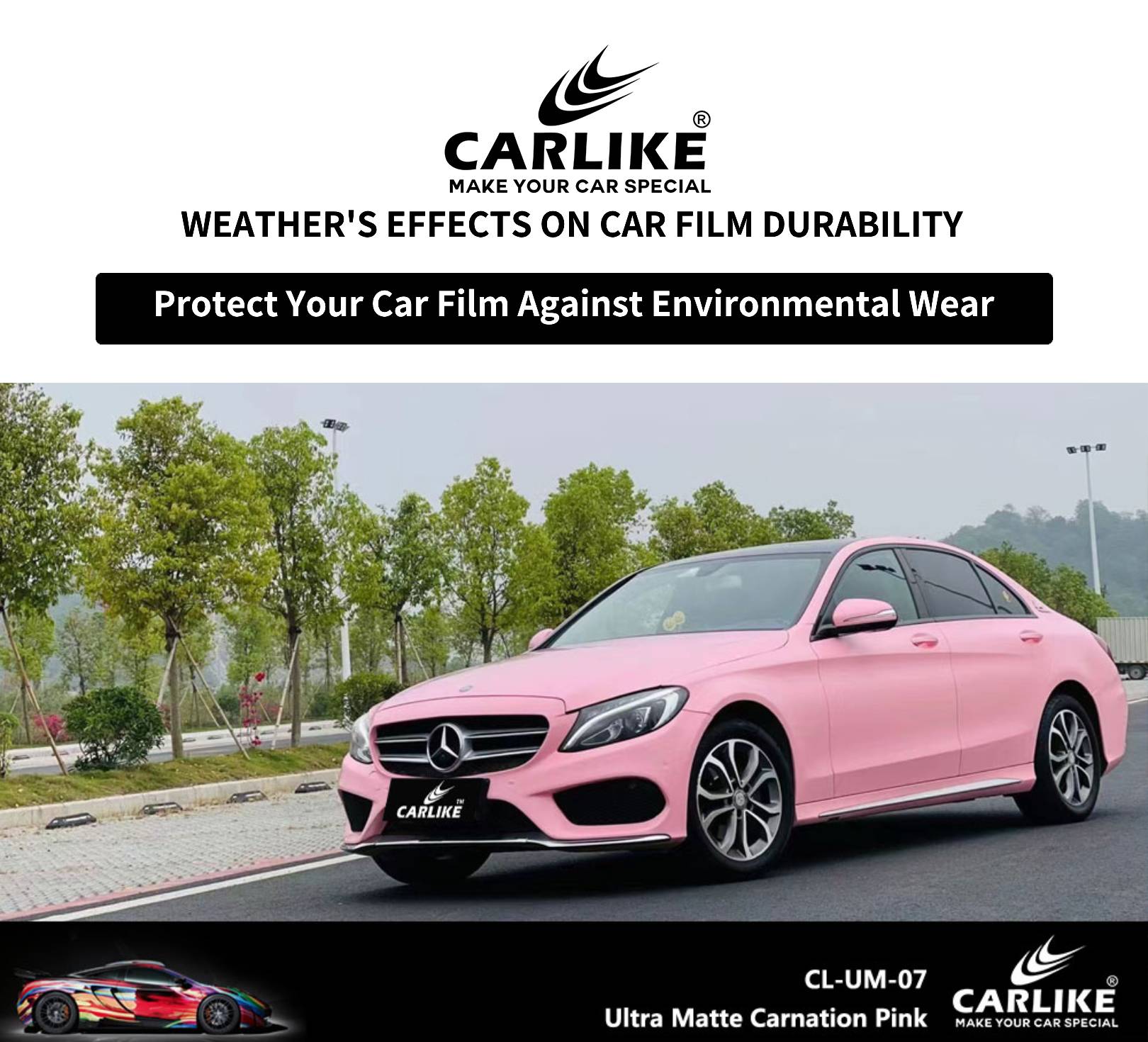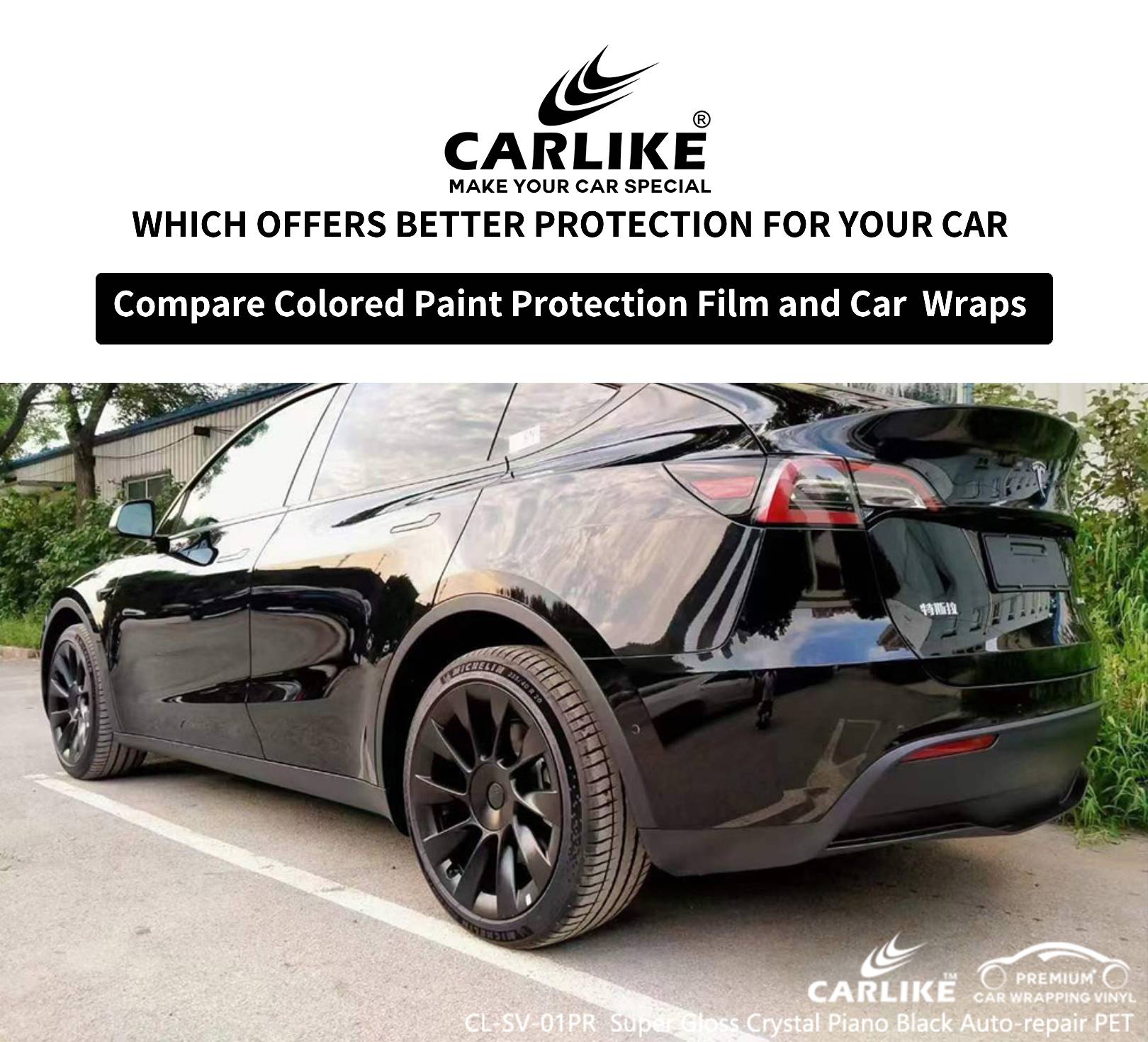CARLIKE-Make Your Car Special.

How Does PPF Protect My Car?
Paint Protection Film (PPF) is a transparent, durable plastic film designed to safeguard the surface of a car's paintwork from various types of damage. It is typically made from polyurethane or polyethylene material, engineered to be optically clear and resistant to yellowing over time.
1. Physical Protection: PPF serves as a physical barrier between the car's paint and external elements. It effectively absorbs the impact of small stones, gravel, road debris, and other objects that could otherwise cause scratches, chips, or dents on the paint surface. By absorbing the force of impact, the film helps prevent direct damage to the underlying paintwork.
2. Chemical Resistance: PPF is resistant to various chemicals and environmental contaminants, including bird droppings, tree sap, insect splatter, and acidic substances found on roads. These contaminants can be corrosive and may etch into the paint if left untreated. PPF provides a protective layer that shields the paint from chemical damage, allowing for easier cleaning and maintenance.
3. UV Protection: Quality PPFs are engineered with UV inhibitors that help block harmful ultraviolet (UV) rays from the sun. UV radiation can cause paint fading, oxidation, and deterioration over time, leading to a dull and aged appearance. By blocking UV rays, PPF helps preserve the color and finish of the car's paint, maintaining its aesthetic appeal and resale value.
4. Self-Healing Properties: Some advanced PPF formulations feature self-healing properties, where minor scratches and swirl marks on the film's surface can disappear over time when exposed to heat or sunlight. The molecular structure of the film allows it to reflow and smooth out imperfections, restoring its original appearance. While self-healing capabilities may not completely eliminate deep scratches, they can significantly reduce the visibility of superficial damage.
5. Optical Clarity: PPF is designed to be optically clear, meaning it provides protection without compromising the clarity or gloss of the underlying paint. High-quality PPFs are virtually invisible once applied, allowing the car's original paint color and finish to shine through unaffected. This ensures that the car maintains its pristine appearance while benefiting from enhanced protection.
Overall, Paint Protection Film (PPF) functions as a proactive defense mechanism for preserving the beauty and integrity of a car's paintwork. By forming an invisible shield against physical, chemical, and environmental damage, PPF helps keep the car looking newer for longer, reducing the need for costly repairs and repaints.
How to install a paint protection film?
1. Surface Cleaning: The car's surface must be thoroughly cleaned before applying PPF to ensure that there are no dirt, dust, or contaminants that could interfere with the adhesion of the film. Typically, a gentle automotive detergent is used to wash the surface, followed by a solvent wipe to remove any remaining residues.
2. Precise Measurement: Once the surface is clean, precise measurements of the car's panels are taken to determine the size and shape of the PPF pieces needed. These measurements ensure that the film will fit each panel perfectly and provide comprehensive coverage.
3. Trimming of the Film: Using the measurements taken, the PPF is trimmed to fit each panel's contours accurately. Specialized cutting tools are used to ensure clean, precise cuts that match the shape of the car's body seamlessly.
4. Application of the Film: After the film is cut to size, it is carefully applied to the car's surface. This requires skill and patience to avoid wrinkles, bubbles, or misalignment. Typically, a solution is sprayed onto the surface to allow for repositioning of the film before it is firmly pressed into place.
5. Squeegeeing and Heat Treatment: Once the film is positioned correctly, a squeegee is used to remove any air bubbles and ensure proper adhesion to the surface. Heat may also be applied to the film using a heat gun or infrared lamp to help it conform to the contours of the car's body for a smooth finish.
6. Professional Installation: While some car owners may attempt to apply PPF themselves, professional installation is recommended for the best results. Experienced installers have the expertise and specialized tools needed to ensure proper application and maximize the protective benefits of the film.
By following these steps, the paint protection film can be applied effectively to provide a durable and long-lasting protective barrier for the car's paintwork.

Cost vs. Benefits of ppf
Cost of Applying PPF:
- The cost of applying PPF can vary depending on several factors, including the size and type of vehicle, the quality of the film used, and the expertise of the installer.
- Typically, applying PPF to a car's exterior involves a significant upfront investment. This cost includes the price of the film itself, labor for installation, and any additional preparation or customization required.
- High-quality PPF materials and professional installation tend to command higher prices but offer better durability and protection.
- On average, the cost of applying PPF to a vehicle can range from a few hundred to several thousand dollars.
Cost of Repairing Damages:
- Repairing damages to a car's surface, such as scratches, stone chips, or paint damage, can also incur significant expenses.
- The cost of repairs depends on the extent of the damage and the specific repair methods required. Minor scratches or chips may be relatively inexpensive to fix, while more extensive damage could necessitate costly repainting or panel replacement.
- Repairs might involve expenses such as labor costs for professional repair services, materials like paint and primer, and potentially additional fees for blending paint or matching colors.
Long-Term Savings with PPF:
- While the initial investment in applying PPF may seem high, it can lead to significant savings in the long run.
- PPF acts as a protective barrier against common sources of damage, including rocks, road debris, insects, and environmental factors like UV radiation and harsh weather conditions.
- By preventing scratches, chips, and other surface imperfections, PPF helps maintain the car's appearance and resale value.
- The cost of repairing damages to a car's surface over time can far exceed the initial investment in PPF. Even a single significant repair could surpass the cost of applying PPF to the entire vehicle.
- Additionally, PPF can extend the lifespan of a car's paint job, reducing the frequency of repainting or touch-up maintenance required over the vehicle's lifetime.
In conclusion, while the upfront cost of applying PPF films may seem steep, it represents a proactive investment in protecting a car's surface from damage. By mitigating the need for costly repairs and preserving the vehicle's appearance and value in the long term, PPF can ultimately result in significant savings and peace of mind for car owners.

In conclusion, Paint Protection Film (PPF) provides a transparent, durable shield against scratches, chips, and other damage to a car's surface. While the initial cost may be significant, the long-term benefits far outweigh it. PPF films installation requires meticulous preparation and professional application, ensuring optimal protection. By investing in PPF films, car owners can potentially save on repair costs and maintenance expenses over time, while preserving their vehicle's appearance and resale value. Overall, PPF films offers a cost-effective solution for maintaining a car's aesthetic appeal and providing peace of mind on the road.




